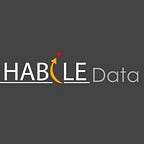Adding Location Labels to Digital Images: A Guide to Enhance Contextual Understanding
In the vast digital landscape, images serve as windows to experiences, memories, and stories. However, without context, these images can fall short of conveying the intended message. This is where location labels come into play.
What are location labels?
Location labels, often referred to as geotags or geolabels, are metadata embedded within a digital image or file. This metadata contains geographical coordinates, such as latitude and longitude, pinpointing the exact location where the image was captured. When this information is attached to an image, it provides viewers with a deeper understanding of where the scene unfolded.
The importance of contextual understanding
Human beings are inherently visual creatures, and our ability to understand and relate to information increases when visuals are coupled with context. Adding location labels to digital images bridges the gap between the image itself and the viewer’s comprehension. This is particularly important in today’s era of rapid information sharing and online communication.
Benefits of adding location labels
- Enhancing visual storytelling: Imagine sharing a breathtaking sunset photo with your friends. Now, imagine being able to convey not only the beauty of the scene but also the exact spot where you stood to capture it. Location labels transform images into captivating stories, allowing viewers to immerse themselves in the moment.
- Enriching personal memories: Our memories are often intertwined with specific locations. Adding location labels to personal photos can evoke nostalgia and help us relive those cherished moments, even years down the line. It’s like flipping through a digital photo album with a map as your guide.
- Facilitating effective communication: In professional settings, such as journalism, travel writing, or real estate, location labels provide vital context. They enable clearer communication by ensuring that everyone is on the same page regarding the specific location being discussed
How to add location labels to your digital images
- Using built-in smartphone features: Many smartphones today come equipped with built-in GPS capabilities that allow you to add location information to your photos. This feature is usually found in the camera settings, where you can enable location tagging.
- Third-party apps for advanced labeling: For more control and customization, various third-party apps are available. These apps not only allow you to add basic location information but also provide features like adding notes, creating custom labels, and organizing images based on location.
- Geotagging: Geotagging involves attaching geographical data not only to images but also to other types of media, such as videos or blog posts. This creates a holistic experience for your audience, enhancing their engagement with your content.
- Considerations for privacy and security: While location labels offer numerous benefits, it’s important to be mindful of privacy and security concerns. Always ensure that you’re comfortable sharing your location data before attaching it to your images. Additionally, be cautious when sharing images on public platforms, as the location data can inadvertently reveal personal information.
- The future of location labels: As technology advances, we can expect even more seamless integration of location labels into various digital platforms. This will further enhance our ability to share experiences and stories, bridging the gap between the virtual and physical worlds.
Overcoming Challenges in Implementation
- Inaccurate geotagging: Sometimes, location labels may be inaccurate due to issues with GPS signals or user error. It’s important to double-check and correct any inaccuracies before sharing labeled images.
- Compatibility issues: Not all devices and platforms support location labels. This can lead to a lack of consistency in the viewing experience. However, as the practice becomes more widespread, compatibility issues are likely to decrease.
- Maintaining consistency: If you’re an avid traveler or photographer, maintaining consistency in labeling your images can be challenging. Developing a systematic approach and using standardized labels can help streamline the process.
- The human touch in labeling: While technology plays a pivotal role in adding location labels, the human touch remains essential. The stories and emotions behind each image are uniquely human, and location labels enhance our ability to share these experiences.
Conclusion
In the digital age, context is key. Adding location labels to digital images enriches our visual storytelling, preserves cherished memories, and facilitates effective communication. As we continue to embrace technology’s potential, let’s remember that it’s the combination of human creativity and technological innovation that truly enhances our digital experiences.
